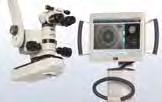
Save time at your check-in and register online before your appointment! It’s as easy as 1-2-3
1. Go online to www.blackhillseyes.com
2. Click this logo on our home page for the link to register:
3. Set-up a secure online account by completing the questionnaire. Completion of your online registration will allow you to send us a secure email message. You will now be able to view your medical record online.
Setting up this account will allow you to send secure email messaging to submit follow-up questions, medicine changes, or post-op questions to your doctor. It’s secure and convenient and available 24/7.
Questions about your portal account, call 605-719-3218

Phone Number
605-341-2000
Toll Free Number
1-800-658-3500
All Phones Are Answered
24 Hours A Day
Any patient requiring assistance transferring will need to be accompanied by someone who can aid in that transfer.
Drop off and pick up area available near front entrance.
Wheelchairs also available at front entrance.
2800 Third Street Rapid City, SD 57701
Just East of Monument Health Rapid City Hospital
CATARACT EVALUATION APPOINTMENT
Phone: 605-341-2000
This is an evaluation appointment only. Surgery will be scheduled after this appointment. You will not have surgery on your first appointment with the Black Hills Regional Eye Institute.
Your evaluation appointment will be 2-3 hours long. You will be evaluated by our surgeon, our staff will perform several tests and your eyes will be dilated.
Bring to your appointment: In addition to the filled-out forms, please bring your Medicare and Insurance cards with you. Federal law requires that you must show a photo ID at your first appointment. We also require a social security number of the responsible party in order to establish an account that carries a balance such as an account that will have pending charges billed to insurance. We look forward to meeting with you at your appointment.
Forms: Prior to your appointment, please take a moment to fill out the following forms. Bring these filled-out forms with you to your appointment.
• Refractive cataract surgery questionnaire
• List of your medications
In most cases, your regular optometrist will do the post-operative eye exams after surgery.
Thank you for choosing Black Hills Regional Eye Institute for your clinic consultation. The additional information in this book will discuss the nature of a cataract, how it is treated, and some exciting technology related to cataract surgery. Your scheduled appointment will be for clinical evaluation only. If your surgeon determines that cataract surgery is medically necessary, the surgery will be scheduled and additional measurements will be taken. The time for this entire appointment will vary, but please plan on spending 2-3 hours at the appointment. Please plan on having your eyes dilated.
Most people believe that vision is the most precious of all of the senses and that their eyes deserve the best care possible. That’s what we provide for you at the Black Hills Regional Eye Institute. If you are scheduled for cataract surgery, you may also benefit from an opportunity to choose advanced surgical options to improve your surgery and reduce your dependence on eyeglasses. You are not obligated to elect options that may require additional expense. Please also feel free to find more information and videos online at www.blackhillseyes.com.
Please take some time to review this informational book from your doctor to introduce you to the options that will be discussed during your consultation.
❍ What is a cataract and how is it treated?
❍ Cataract surgery options and upgrades




❍ Post-operative restrictions
❍ Posterior Capsule Opacification (After Cataract)
Sincerely,
Black Hills Regional Eye Institute
WELCOME
Cory Bergman, MD
Michael daSilva, MD
Stephen Khachikian, MD
Adam Jorgensen, MD
To find out more about our surgeons please visit www.blackhillseyes.com and click Doctors
FACTS ABOUT CATARACTS
WHAT IS A CATARACT?
A cataract is the result of a natural change occurring inside your eye, a gradual clouding that can make your vision less sharp over time.
You see, the eye works much like a camera, and like a camera, the eye depends on a clear lens to properly focus images. A healthy, transparent lens absorbs light and accurately focuses it onto the retina (the back of your eye), providing a crisp, clear image.
As we age, however, proteins in the lens begin to clump together, forming opaque clusters. Over time, these protein clumps will eventually cloud the lens, allowing significantly less light to pass through. The small amount of light that does make it to the retina is diffused or scattered, leaving vision defocused.
WHAT CAUSES CATARACTS?


Although the majority of cataracts develop on their own, as part of the natural aging process, there are certain risk factors that can contribute to cataracts developing earlier, or at an accelerated rate.
Risk factors include:
❍ Trauma to the eye, including injury, burns or surgery





❍ Toxins, including regular use of tobacco, alcohol or corticosteroids













❍ Exposure to radiation, X-rays or ultraviolet (UV) light


❍ Certain diseases, including diabetes, hypothyroidism and glaucoma

Heredity can also play a factor in determining when cataracts will begin to form in your lenses.
WHAT ARE THE SYMPTOMS OF CATARACTS?
Symptoms include:
❍ Blurred vision - Blurriness is one of the earliest and most common signs of cataracts.






















































❍ Faded or dull colors - Colors appear less vivid than they once were. Certain shades can become more difficult to differentiate from one another



❍ Poor night vision - At first, you may simply need more light to read. Over time, you may find it more difficult to see objects in the dark, particularly when driving.
❍ Sensitivity to light - Lights may seem uncomfortably bright, or appear to have halos around them.


THE SURGICAL PROCESS
THE SURGERY: QUICK, BUT COMPLEX
The typical surgery procedure lasts 20 to 30 minutes, although some cataracts are more difficult to remove and may require more time. Here’s an overview of the procedure:
❍ The skin around your eye will be wiped with disinfectant, and medicated eye drops will be applied. These drops prevent infection and inflammation, and will also keep your pupil fully dilated during the procedure.
CATARACT REMOVAL:

After making a small incision in your eye, your surgeon will insert a probe to break up and remove the cloudy, cataract-affected lens.
❍ To ensure you feel no pain during surgery, your eye will be anesthetized with topical drops or a local injection, depending on the surgeon’s preference. You won’t be put to sleep for the procedure, but you’ll likely receive a mild sedative, so that you stay relaxed and comfortable throughout.
LENS INSERTION:
The flexible IOL is folded up and inserted into the lens capsule, at which point it opens, and its haptics, or “arms,” unfold to keep it in the proper position.
❍ After making a tiny incision (2-3 mm) in your cornea, the surgeon will use a probe the size of a pen tip to break apart and suction out the old lens. The most common technique for removing cataracts is a state-ofthe-art process called phacoemulsification, in which high frequency sound waves are used to break the lens into removable pieces.

❍ Once the old lens has been removed, the surgeon will insert the replacement intraocular lens (IOL) into your eye. Typically, the IOL is rolled up into the tip of an injector tool, so that it can be inserted through the same tiny incision. Once injected, the IOL unfolds perfectly into place.

VISION RESTORED:
With the cataract removed, and the IOL in place, light can once again travel unimpeded to the back of your eye for clearer, more youthful vision.
❍ Because of the small surgical incision, you probably won’t require stitches - your eye should heal itself naturally. You’ll likely, however, have a protective patch placed over your eye.
POSTERIOR CAPSULE OPACIFICATION (AFTER CATARACT)
intraocular lens may become cloudy. Some may refer to clouding of the lens capsule as a secondary cataract. There is a treatment option for the cloudiness of the lens capsule with the YAG laser procedure. About 20% of cataract surgery patients will eventually need this YAG laser procedure. Once the cloudy capsule is treated with the YAG laser, it will not get cloudy again.
Days, months or years after cataract surgery, your vision may become blurry again. This is not caused by another cataract, and cataracts don’t “come back”. Instead, the capsule or natural membrane that holds your newly implanted

If at any time this secondary laser surgery is indicated, it is considered a separate procedure from your original cataract surgery. Insurance considers this a medical problem and will apply benefits accordingly. The fees associated with this procedure are NOT included with your original cataract surgery.
UNDERSTANDING REFRACTIVE ERRORS
NEARSIGHTEDNESS
Nearsightedness, or myopia, occurs when the cornea is too curved or the eye is too long. This causes light to focus in front of the retina, resulting in blurry distance vision.
ASTIGMATISM
Astigmatism often occurs alongside either farsightedness or nearsightedness. Astigmatism is when the cornea is shaped like a football and causes light to focus on more than one point on the retina blurring or distorting vision.



FARSIGHTEDNESS
Farsightedness, or hyperopia, occurs when the cornea is too flat. This causes light to focus beyond the retina and results in blurry near vision.
PRESBYOPIA
Presbyopia is the natural aging process of the eye that affects everyone, usually starting around age 40. As we age, the natural lens in our eye loses flexibility, decreasing the ability to focus on things up-close, requiring the need for reading glasses.

Monofocal Lens



Typically covered by insurance or Medicare, these trusted lenses provide clear distance vision. However, you will likely still need glasses for reading – and possibly for distance vision, particularly if you already have pre-existing astigmatism.15
Astigmatism-Correcting Toric Lens


These advanced technology lenses are designed to correct astigmatism at the time of surgery for clear distance vision, usually without the need for glasses. However, you will still need glasses for reading.12
Multifocal Lens
There are now several choices of multifocal lenses. In addition to correcting distance vision, the surgeon can select from multifocal IOLs that can improve near and/ or intermediate vision. We tailor the options to your needs.3
Choosing the IOL That Best Fits Your Lifestyle
Positives:
• Improved distance vision
• Cost usually covered by insurance and Medicare
Negatives:
• Will likely still require glasses for close-up vision
Positives:
• Improved distance vision, usually without glasses, for astigmatic patients
Negatives:
• Will likely still require glasses for close-up vision
Positives:
• True performance at all distances, near through distance
• Reduces the need for glasses
Negatives:
• May experience glare/halos around lights at night
• May experience difficulty in low lighting situations, like driving at night








NearIntermediateDistanceAstigmatism CareCredit The Eye Institute utilizes CareCredit financing to provide interest deferred payment options for patients that upgrade to a Premium Lens. Visit www.carecredit.com information. This option will be discussed at your appointment. X X X
X
X
X
CATARACT SURGERY OPTIONS
DID YOU KNOW THAT THERE ARE TWO TYPES OF CATARACT SURGERY?
TRADITIONAL AND BLADELESS LASER SURGERY.
TRADITIONAL CATARACT SURGERY
❍ The best IOL power either near or distance is selected for each eye, but most patients with astigmatism still need glasses for both distance and near vision.
❍ Most patients choose distance vision and wear glasses.
❍ The incisions and other parts of the surgery are done manually by the surgeon.
❍ The cataract is removed with ultrasound.
❍ The medical insurance coverage is always subject to your policy’s co-pay and deductible.
ADVANCED BLADELESS LASER CATARACT SURGERY


The following Advanced Bladeless Laser Assisted Surgery options include additional services that are NOT medically necessary* for cataract surgery, and require additional out-of-pocket costs.
WHEN YOU CHOOSE THE
APPROACH, YOU WILL ENJOY THE BENEFITS OF:

❍ Computer-controlled laser allows for individualized specifications not attainable with traditional surgical methods.

❍ This highly advanced technology customizes the precision placement of incisions and fragments the cataract for easier removal and faster healing time than traditional cataract surgery.
OPTIWAVE REFRACTIVE ANALYSIS (ORA)
ORA System Technology is a sophisticated device used to provide real-time measurements of the patient’s eye–during cataract surgery, not possible with today’s conventional instruments. ORA can maximize the potential for vision improvement after cataract surgery or laser vision correction treatment. This effective technology allows our eye surgeons to customize your vision more precisely than ever before. *determined

by U.S. government and insurance companies.
CATARACT POST-OPERATIVE RESTRICTIONS
THE FIRST 24-HOURS
(until your 1-day post-operative exam):
DO NOT DRIVE: Do not drive, make important legal decisions, or drink alcohol for 24 hours.
REST: No vigorous activity. Avoid straining or lifting more than 20 pounds. Someone should be available for assistance or a ride. Resume all of your regular medications and diet.
EYE DROPS: Start your eye medications in the operative eye as prescribed, if applicable. Gently blot the excess drops with a tissue, but DO NOT RUB the eye.
EYE SHIELD: Wear the eye shield while you sleep for the first 3 nights.
SUNGLASSES: The intraocular lens is clearer than the original cloudy lens that was removed. You will initially be light sensitive. Dark glasses are recommended for comfort when out in bright light.
VISION: Your eyeglasses prescription is no longer accurate for this eye. Your vision will be blurry from the surgery, and you will notice halos around lights tonight. The vision usually starts to improve by the next morning after surgery.
PAIN: The eye will feel scratchy today. You may use over-the-counter pain medications (e.g. Tylenol) for discomfort. In addition to the medicine eye drops you have been prescribed, you may use sterile artificial tear drops for the scratchiness. If you have severe or unusual pain, nausea with vomiting, or temperature greater than 101°F, please call the Eye Institute at (605)341-2000.
THE FIRST 2 WEEKS
(AFTER the 1-day post-op exam):
VISION: It takes time for the eye to heal. Vision continues to clear for the first two weeks, or longer. It is ok to use the eye, but it may become dry (especially with reading or computer use), and you should use artificial tear drops as needed.
GLASSES: You will need reading glasses for close vision. You may remove the old prescription lens from your current eyeglasses or change the lens for plain glass, although it will not give maximum vision. A new eyeglass prescription can be made after the eye has healed for about 4 weeks.
REDNESS: The white part of the eye may be red from fragile blood vessels that can break during the surgery. If new redness develops after surgery, especially associated with pain or worsening vision, you need to call us immediately at (605) 341-2000.
WATER: You may shower after 24 hours from the time of your surgery. Be careful washing your face and hair. Do not allow dirty water to run into your eye. Avoid rubbing the eye, but it is ok to rinse the closed eye. Avoid swimming in water for at least 2 weeks. Do not scuba dive or snorkel for at least 1 month.
ACTIVITIES: One day after surgery, you may resume routine activities of daily living. You may resume driving when your vision has cleared to a safe level. You may resume light exercise or golf after 48 hours. Eye Makeup may be applied as soon as 48 hours after surgery. Avoid jarring activities, such as running or riding a horse, for 1 week. Avoid activities where eye trauma is possible (boxing, aggressive sports, tackle football, etc.) for 3 months.
At the Black Hills Regional Eye Institute, we are dedicated to serving our community as successfully as possible.

We offer our patients the commitment and compassion that go unmatched by our competitors. Highly focused on the well-being of the community, our staff reaches out to deliver preventative screenings to the public in order to teach them about eye health. In addition, the Eye Institute hosts technical, educational seminars for other eye care professionals.
Cataract surgery is also available in Casper, Gillette, Spearfish,Winner and Pierre. Please call 341-2000 for more details.
Interstate-90 Omaha St. Main St. St. Joseph St. St. Patrick St. Cambell St. 5th St. I-190 Haines St. LaCrosse St. Exit 59 Exit 58 Exit 57 W.Blvd. 3rd St. Mt Rushmore Rd. (8th St.) Cathedral Dr. Fairmont Blvd. BLACK HILLS REGIONAL EYE INSTITUTE Monument Health Rapid City Hospital 16 79 N 2800 Third Street | Rapid City, SD 57701 605.341.2000 | www.blackhillseyes.com









































































